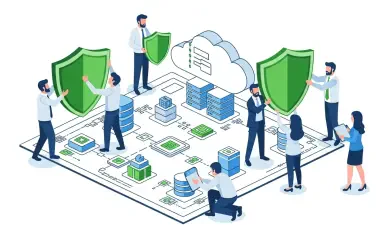Imagine a federal agency, tasked with safeguarding critical national data, suddenly finding its defenses shattered by a single software flaw, an event that unfolded recently when an unnamed federal civilian executive branch agency fell victim to a cyberattack exploiting a critical vulnerability in GeoServer, an open-source mapping tool. The breach, flagged by the Cybersecurity and Infrastructure Security Agency (CISA), has sent shockwaves through the cybersecurity community, raising pressing questions about the security of widely used software in government systems. This roundup gathers insights, opinions, and actionable tips from various industry sources and experts to dissect the incident, compare perspectives on federal cybersecurity readiness, and highlight strategies to prevent such breaches from recurring.
Unpacking the GeoServer Vulnerability and Its Impact
The Critical Flaw That Shook Federal Defenses
At the heart of this breach lies CVE-2024-36401, a severe vulnerability in GeoServer rated at a staggering 9.8 on the CVSS scale, allowing remote code execution by attackers. Industry analysts have noted that this flaw, disclosed publicly just days before exploitation began, exemplifies how quickly threat actors can weaponize known issues in open-source tools. Many experts argue that the accessibility of such software, while beneficial for collaboration, often leaves it exposed due to inconsistent security oversight.
Differing views emerge on the inherent risks of open-source platforms like GeoServer. Some cybersecurity professionals emphasize that the transparency of these tools enables rapid community-driven fixes, but others caution that without strict governance, vulnerabilities can remain unaddressed until exploitation occurs. A balanced perspective suggests that while open-source software isn’t inherently insecure, organizations must prioritize rigorous patch management to mitigate risks.
Timeline and Fallout of the Attack
Reports from multiple security firms indicate that attackers gained access to the federal agency’s network within two weeks of the flaw’s disclosure, highlighting a critical gap in response time. Commentators across the board agree that this rapid exploitation underscores a systemic issue: federal entities often lag in applying patches, even for flaws listed in CISA’s Known Exploited Vulnerabilities catalog. The consensus is that delayed remediation directly enabled the compromise of multiple GeoServer instances.
Beyond the initial breach, the incident revealed deeper operational failures. Experts point out that the agency’s inadequate incident response protocols hindered investigative efforts, with some sources noting a lack of endpoint protection on public-facing servers as a glaring oversight. This has sparked a broader discussion on whether current federal cybersecurity standards are sufficient to counter agile, sophisticated threats.
Diverse Opinions on Federal Cybersecurity Posture
Gaps in Preparedness and Response
Cybersecurity specialists have expressed concern over the federal agency’s inability to swiftly address the GeoServer flaw despite prior warnings. Many argue that this incident reflects a pervasive challenge within government bodies: outdated systems and slow bureaucratic processes often delay critical updates. Some industry voices advocate for stricter mandates on patching timelines to enforce accountability.
On the other hand, a segment of analysts suggests that the issue extends beyond policy to resource allocation. They highlight that many agencies lack the funding or trained personnel to maintain robust cybersecurity frameworks, leaving them vulnerable to even well-known threats. This perspective calls for increased federal investment in cyber defense infrastructure to bridge these gaps.
A third viewpoint stresses the importance of tailored incident response plans. Several experts have criticized the agency’s playbook as insufficient, noting that without predefined collaboration mechanisms with entities like CISA, recovery efforts are inevitably stalled. There’s a growing push for standardized, regularly tested response strategies across all federal sectors.
Threat Actor Tactics and Global Implications
Insights from security research firms reveal that the attackers employed a mix of tools like Burp Suite for scanning and China Chopper web shells, alongside living-off-the-land techniques to evade detection. Many in the field describe this hybrid approach as a hallmark of modern cyber threats, blending accessible malware with bespoke strategies. This adaptability, they warn, challenges traditional defense mechanisms.
Global exploitation patterns of CVE-2024-36401 have also drawn attention, with campaigns targeting organizations in multiple countries. Analysts note that this widespread activity suggests a coordinated effort by diverse threat actors, possibly including state-sponsored groups. Some experts argue that this necessitates international cooperation to share threat intelligence and curb such exploits.
Contrasting opinions exist on how to counter these sophisticated tactics. While some advocate for advanced endpoint detection and continuous monitoring as the primary defense, others believe that investing in threat hunting and proactive vulnerability scanning is equally vital. This debate underscores the need for a multi-layered approach to cybersecurity in an era of evolving threats.
Recommendations and Best Practices from the Field
Strengthening Vulnerability Management
Across various sources, a common recommendation emerges: organizations must prioritize immediate remediation of known vulnerabilities, especially those flagged by CISA. Experts universally agree that establishing a proactive vulnerability management plan is non-negotiable for federal and critical infrastructure entities. This includes regular scans and strict adherence to patching deadlines.
Additional tips focus on fostering a culture of urgency around cybersecurity. Some professionals suggest that leadership within agencies should champion swift action on security alerts, ensuring that technical teams are empowered to act without bureaucratic delays. This cultural shift, they argue, could prevent breaches like the one experienced by the federal agency.
Another piece of advice centers on leveraging automation for patch deployment. Several industry commentators note that automated systems can drastically reduce the window of exposure for known flaws, providing a practical solution for resource-strapped organizations. This approach is seen as a scalable way to enhance resilience against rapid exploitation.
Building Robust Incident Response Frameworks
Experts also stress the importance of comprehensive incident response plans, tailored to include collaboration with external partners like CISA. Many recommend regular drills to test these plans, ensuring that all stakeholders are prepared for real-world scenarios. This preparation is deemed critical to minimizing damage during a breach.
A differing but complementary perspective focuses on the role of detailed logging and monitoring. Security professionals advise continuous tracking of endpoint detection alerts to catch malicious activity early. This practice, they note, can significantly shorten an attacker’s dwell time within a network, limiting potential harm.
Finally, there’s a call for enhanced training programs to upskill federal employees in cybersecurity best practices. Some sources argue that human error often exacerbates technical vulnerabilities, making ongoing education a cornerstone of defense. Equipping staff with the knowledge to recognize and respond to threats is seen as a long-term investment in security.
Reflecting on a Pivotal Cybersecurity Wake-Up Call
Looking back, the breach at the federal agency through the GeoServer flaw served as a stark reminder of the vulnerabilities lurking in critical systems. The incident exposed not only technical shortcomings but also systemic challenges in federal cybersecurity readiness. As discussions among experts unfolded, it became clear that a unified effort was needed to address these gaps. Moving forward, organizations were encouraged to adopt a proactive stance by integrating automated patching, rigorous monitoring, and international threat intelligence sharing into their strategies. Exploring resources on vulnerability management and incident response planning was also recommended as a next step to build stronger defenses against the ever-evolving landscape of cyber threats.













